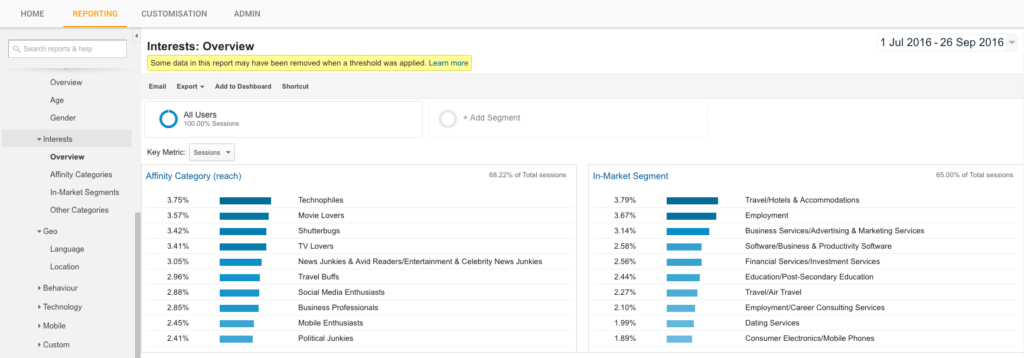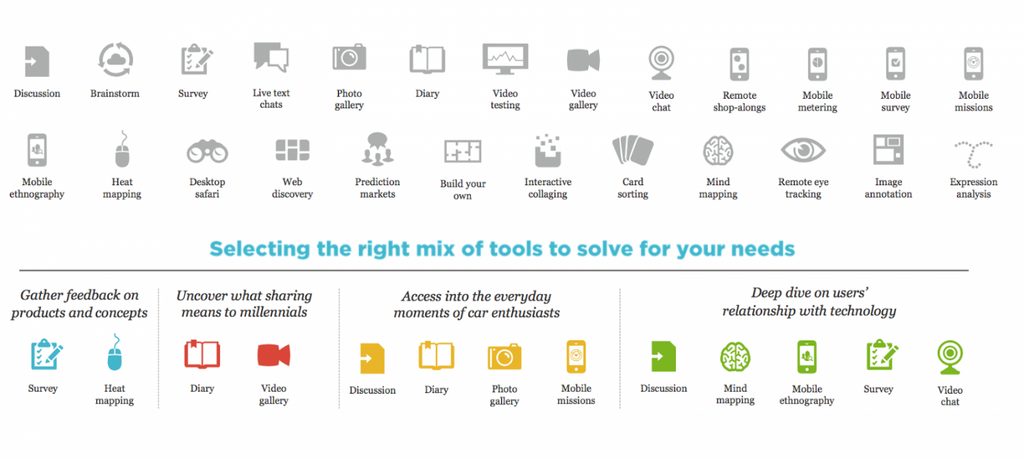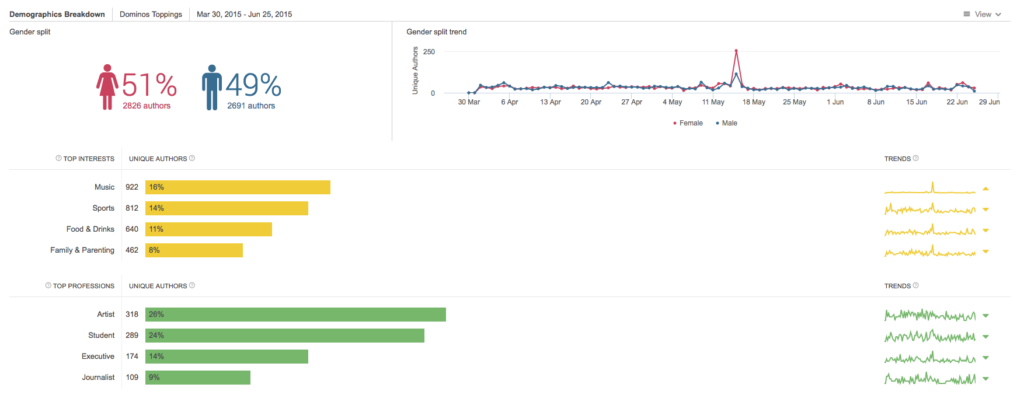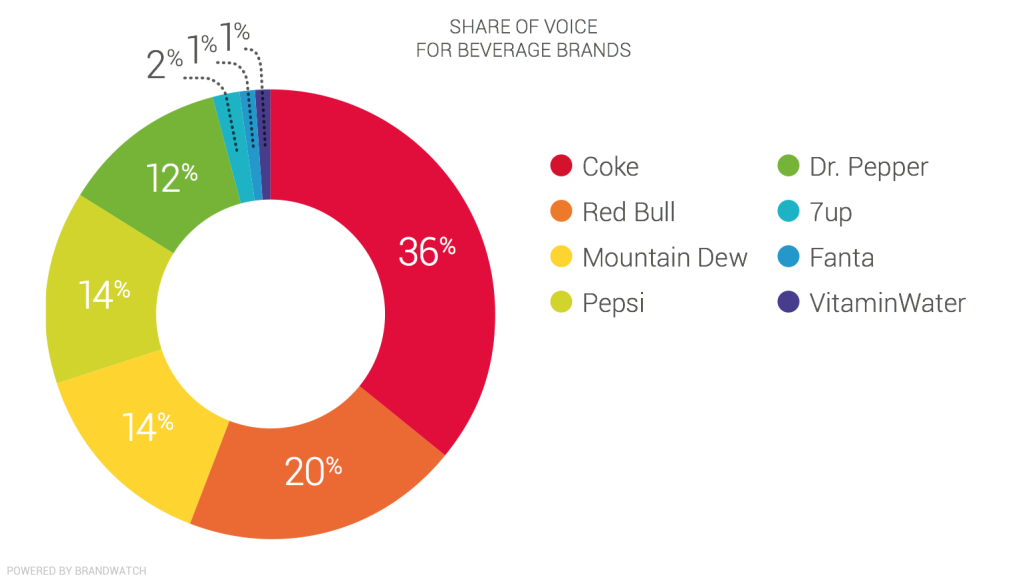10 Social Listening Tools and Who They’re Best for
By BrandwatchJul 14
Join us and boost your social media potential with our data-led event
Published December 14th 2016
Strawberries and cream. Rock and roll. Research and analysis. Some things just work well together.
Advertising research brings together two strategies together to help improve your marketing from two different approaches. It takes a 360-degree view to maximize the lessons you can take from each marketing campaign.
The first is about laying the foundations for good marketing: understanding your audience. The second is a retrospective look at how the campaign performed, allowing you to retain elements that worked and remove ones that didn’t.
Advertising research is a specialized form of market research which aims to discover which ads will be most effective with the existing and potential customer base. It does this both through detailed research before a campaign and by analyzing the success of the campaign.
The aim of advertising research is to understand your customers and their motivations better so that you can produce better ads that demonstrate why your product meets their needs. Once you have an understanding of the people you are targeting, an analysis of the campaign will tell you how successful the campaign was, and help you to iterate your campaigns to continually improve results.
The advertising research carried out before the campaign is about understanding your audience. There will be different groups of prospects and customers. The research should uncover the different market segments so you can target your campaign at specific groups.
Online surveys can be easily set up with sites like Survey Monkey, and are one of the best ways to understand your customers. This allows you to ask specific questions, although you need to take response bias into account and carefully consider the questions you ask. It might be fun to find out their favorite Madonna songs, but too many questions may mean a smaller response rate.
Analytics can tell you more than the amount of traffic you are receiving. The Audience tab shows geography, interests, and a range of demographics.

Conducting online keyword research is the foundation of SEO, but it also tells you what consumers are interested in and the relative level of interest. It also helps to reveal the language being used to talk about these topics.
Reading customer reviews can highlight common problems or wishes for a product and common frustrations.
Sites like Quora contain questions and crowdsourced answers on a wide range of topics, including discussions about brands. These sites can give you an idea of the questions and concerns that people have in relation to your service or product.
Looking at your competitors’ websites and social media accounts can provide useful information about consumers that are shopping in your vertical but have chosen not to buy from your brand. Don’t hate on them; find a way to make them come around to your side.

Does your blog have comments enabled? If so, reading through any comments is a good way of discovering questions your audience might have.
Google Trends can help you to understand if a topic is becoming more or less popular. The Consumer Barometer allows you to build interactive charts with various filters applied, although the questions are limited to consumer online behavior.
Government data is available which is free and can help you understand a group, and several other sources can also be accessed for free.
Twitter Insiders is a 12,000 strong focus group of US and UK Twitter users who can be asked to perform a range of activities over a four to six week period. It’s an interesting concept of a focus group at scale.
 Social media
Social mediaComments on your social media profile or posts can be a good source of information. Likes, shares, and other social media metrics can be useful to understand how popular your campaign is.
To really make the most of social media, and turn millions of organic conversations into a giant focus group, you need a good social listening platform. A tool like Brandwatch will allow you to gain an in-depth research into your audience and the segments within it, as this guide to social media research demonstrates.
The simple audience research starts by searching for mentions of your brand and products. You can then look at the inbuilt details about these people. All mentions are marked up with gender, profession, location and interests when they are crawled, so there is no extra work for you to do.

With a little manual work, more detailed insights can be surfaced. One method is to build a panel of users who have mentioned your brand or industry (perhaps more than once in a set period, so the group more accurately represents repeat customers rather than one-offs).
Depending on the size of your search results, you can take a sample or use the whole data set, and read through each mention. Brandwatch allows you to assign unlimited tags to each mention, meaning you can tag emotional responses, mentions that include you and a competitor, author types (say for example if the buyer and user are different for your product).
Once you have tagged the mentions you can start to analyze further and cross the different categories and tags to unearth more detail about your audience.
Campaign analysis is a simple task for a social intelligence platform and by combining it with other data you can build up an accurate picture of the response to your campaign.
If you have set up UTM codes your web analytics will be able to tell you how traffic came to your site, and if it was as a result of your campaign.
Email automation software will tell you open rates and click-thru rates. You can benchmark this against previous efforts or look at an industry study.

Social intelligence can help to understand some solid campaign metrics and provide a deeper understanding of the effect the campaign had. You can take some of your advertising research from the earlier stage and look at what has changed in response to the campaign. You can also use it to write a social media report, describing the response to the campaign on social.
A simple metric that will give you an indication of whether your campaign has increased brand awareness and conversation around the brand.
Our analysis shows that up to 96% of brand conversations happened outside owned channels, or with mentions that don’t tag the brand, meaning a social intelligence is the only way to pick up all the conversation around your campaign.
While you might see an increase in your number of mentions across the web, you want to benchmark this against your competitors to see how you have increased your share of voice in comparison to them. You can also break share of voice down further, to see who is winning a particular segment.

Reach is the potential number of people that those mentions will be seen by. It takes into account the number of followers of each author who mentions you. If your campaign included a celebrity or influencer, they are likely to generate much higher reach.
How many people actually took an action when seeing your campaign? This can give you an indication of the number of people that actively engaged with the campaign. These people would be more likely to recall it even if they didn’t go on to click through to your site.
Part of your campaign analysis will be to understand how many media mentions you earned and categorize them into different tiered publications.
Social intelligence will make sure you don’t miss any mentions, and also make it easy to categorize the publications. Mentions are automatically categorized by site type. This allows you to read through the news mentions and report on the top publications that have covered your campaign.
You can create complex Boolean queries in a social intelligence tool like Brandwatch, meaning you can measure if purchase intent language has increased.
Monitoring for increases in this type of language can again give you an indication of the number of people who have seen the campaign and intend to take an action but have not done so yet.

You can easily monitor for positive or negative responses to your campaign as a good social intelligence tool will have sentiment analysis built in.
This can give you an overview of public perception, and you can categorize mentions to understand how sentiment changes in relation to the brand, products, or campaign itself.
As mentioned earlier, mentions can be manually tagged to understand the emotional response to the campaign.
You can discover the qualities people associate with your brand or product by creating rules that segment mentions of your brand that feature adjectives to discover brand associations. Monitoring these over time can reveal changing attitudes and associations that your campaign has influenced.
Conducting research before your campaign and measuring the impact of your advertising is the best method for ensuring success. Understanding who you are marketing to will help design a campaign that is likely to connect with those people and their needs. Measuring and refining your marketing is the fine tuning that will make your efforts really shine.
Offering up analysis and data on everything from the events of the day to the latest consumer trends. Subscribe to keep your finger on the world’s pulse.
Consumer Research gives you access to deep consumer insights from 100 million online sources and over 1.4 trillion posts.
Existing customer?Log in to access your existing Falcon products and data via the login menu on the top right of the page.New customer?You'll find the former Falcon products under 'Social Media Management' if you go to 'Our Suite' in the navigation.
Brandwatch acquired Paladin in March 2022. It's now called Influence, which is part of Brandwatch's Social Media Management solution.Want to access your Paladin account?Use the login menu at the top right corner.



